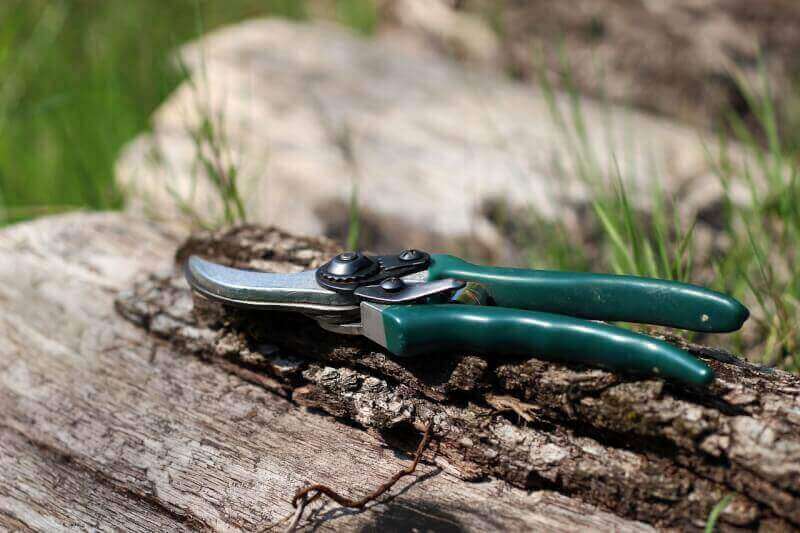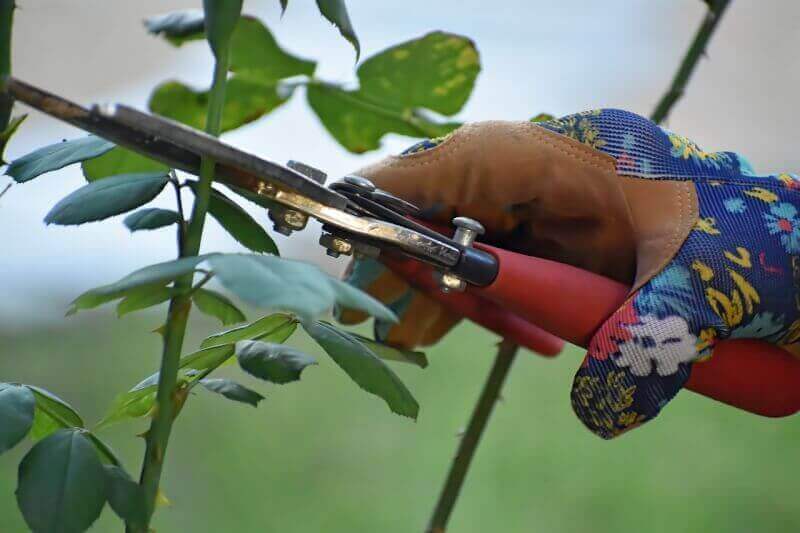👋 Click the mic button to talk to Alfred, the Todd's Seeds Gardening/Sprouting Expert – Feel free to ask him anything!
Ask Virtual Todd Anything - Click the Mic
If you’ve ever found yourself wondering how to properly prune your fruit trees, look no further! This article will provide you with all the essential tips and techniques to ensure your trees stay healthy, productive, and aesthetically pleasing. Pruning fruit trees can be a daunting task, but fear not, as we’ll guide you through each step, from identifying the right time to prune to understanding the different pruning techniques. By the end of this article, you’ll be equipped with the knowledge and confidence to keep your fruit trees in optimal shape and maximize their yield. So, let’s dive right in and discover the art of pruning fruit trees together!
Why Prune Fruit Trees?
Pruning fruit trees is an essential practice for maintaining their health and promoting optimal growth. By regularly pruning your fruit trees, you can ensure their longevity and improve their overall fruit quality. Pruning also helps increase sunlight penetration to the inner branches and controls the size and shape of the tree.
Promotes healthy growth
Pruning fruit trees stimulates healthy growth by removing dead, damaged, or diseased branches. It also allows for better air circulation within the tree’s canopy, reducing the risk of fungal diseases and pests. By eliminating weak or crossing branches, pruning encourages the tree to direct its energy towards the production of new, stronger branches.
Improves fruit quality
One of the main benefits of pruning fruit trees is the enhancement of fruit quality. By thinning out excess branches and removing crowded areas, you allow more space for sunlight to reach the remaining fruit. This results in better color, flavor, and sweetness, as well as larger and juicier fruits. Pruning also helps improve the distribution of nutrients within the tree, leading to more uniform and abundant fruit production.
Increases sunlight penetration
Proper pruning techniques ensure that sunlight can reach the inner parts of the tree. Sunlight is vital for the process of photosynthesis, which is responsible for the production of sugars and nutrients in the leaves. By allowing sunlight to penetrate throughout the canopy, you promote the healthy growth of leaves and ultimately enhance the tree’s overall vigor and productivity.
Controls size and shape
Pruning fruit trees helps control their size and shape, making them more manageable and aesthetically pleasing. Depending on the desired outcome, pruning can shape a tree into a central leader form or an open-vase shape. Regular pruning allows you to maintain a tree’s size, preventing it from becoming overgrown and making harvesting and maintenance tasks easier.
Pruning Tools and Safety
Choosing the right tools
Having the right pruning tools is crucial to ensure effective and safe pruning. A few essential tools for fruit tree pruning include hand pruners, loppers, pruning saws, and pole pruners. Hand pruners are suitable for cutting branches up to ¾ inch thick, while loppers can handle branches up to 2 inches in diameter. Pruning saws are best for larger branches, and pole pruners are useful for reaching high branches without the need for a ladder.
Maintaining and cleaning tools
To ensure longevity and efficient pruning, it is important to regularly maintain and clean your pruning tools. After each use, wipe the blades clean and apply some light oil to prevent rust. Sharpen the cutting edges regularly to maintain their sharpness, ensuring clean and precise cuts. Proper tool maintenance enhances safety and extends the lifespan of your pruning equipment.
Safety precautions
Pruning fruit trees can be physically demanding and potentially dangerous, so it’s essential to prioritize safety. Always wear protective gear such as gloves, safety goggles, and a sturdy pair of boots. Use a stable ladder or a pruning pole with a reach that eliminates the need to climb. When using power tools, follow the manufacturer’s instructions and use personal protective equipment. Be cautious of falling branches and watch out for electrical wires when pruning near power lines.

When to Prune Fruit Trees
Dormant pruning
Dormant pruning, done during late winter or early spring before new growth begins, is the most common time to prune fruit trees. This period allows for easy identification of branch structures and provides an opportunity to remove any weak or diseased branches. Dormant pruning helps stimulate new growth once the warmer weather arrives and prepares the tree for a productive growing season.
Summer pruning
Summer pruning can be done to enhance the shape and control the size of the tree. It involves removing excessive vegetative growth, water sprouts, and any diseased or damaged branches that appear during the growing season. Summer pruning should be done when the tree is actively growing but avoid hot, dry periods, as this can stress the tree.
Specific fruit tree timing
Different fruit trees may have specific timing requirements for optimal pruning. It is essential to research and understand the specific needs of each type of fruit tree. For example, apple trees are best pruned during late winter or early spring, while peach trees benefit from pruning just before they break dormancy in early spring. Citrus trees, on the other hand, require minimal pruning and can be shaped lightly throughout the year.
Pruning Techniques for Fruit Trees
Thinning cuts
Thinning cuts involve removing entire branches or stems flush with the main branch or trunk. This technique is commonly used to improve the tree’s structure, light penetration, and airflow. Thinning cuts should be made just outside the branch collar, avoiding leaving stubs that can invite disease and decay. Thinning cuts are particularly useful for reducing overcrowding in the tree canopy.
Heading cuts
Heading cuts are made by cutting a branch back to a bud or lateral branch. This technique promotes branching and redirects the tree’s energy to encourage new growth. Heading cuts are commonly used for shaping the tree and controlling its overall size. When making heading cuts, ensure that the branch is cut at a slight angle just above the bud or lateral branch, allowing for proper healing.
Renewal cuts
Renewal cuts involve removing older, unproductive branches at their point of origin. This technique stimulates the growth of new, vigorous branches from the base of the tree, rejuvenating its productivity. Renewal cuts are particularly beneficial for mature fruit trees that have experienced a decline in fruit production or have prominent deadwood.
Directional pruning
Directional pruning is used to direct the growth of the tree towards a specific direction or to create a desired shape. It involves selectively pruning branches to encourage growth in the desired direction while removing branches that may obstruct or crowd the preferred shape. Directional pruning helps maintain a balanced and aesthetically pleasing tree structure.

Pruning Young Fruit Trees
Establishing the central leader
When pruning young fruit trees, it is essential to establish a central leader, which is the main trunk of the tree. This involves selecting a single, vigorous, and upright central stem and removing competing branches to create a dominant leader. The central leader provides the structure for the tree’s growth, ensuring a strong and well-balanced framework as the tree matures.
Removing competing branches
Young fruit trees often develop multiple branches competing for dominance. To ensure proper growth and development, it is important to remove competing branches that may impede the central leader or overcrowd the tree’s canopy. Carefully select the strongest and best-placed branches, removing others to promote a healthier and more well-spaced structure.
Training for desired shape
Pruning young fruit trees also involves training them to achieve the desired shape and structure. Depending on the desired outcome, trees can be trained into a central leader or an open-vase shape. Central leader training involves allowing the main trunk to grow vertically and maintaining a shorter and balanced lateral branch arrangement. Open-vase training promotes an open and spreading tree by removing the central leader and encouraging lateral growth.
Pruning Mature Fruit Trees
Restoring neglected trees
Mature fruit trees that have been neglected or left unpruned for an extended period may require restorative pruning. This involves removing dead, diseased, or damaged wood and thinning out congested areas to improve air circulation and sunlight penetration. Restoring neglected trees can help revive their vigor, promote new growth, and restore productivity.
Removing dead and diseased wood
Pruning mature fruit trees also includes the removal of dead and diseased wood. Deadwood is not only unsightly but can also become a harbor for pests and diseases. By removing dead and diseased wood, you prevent the spread of infections and create a healthier environment for the tree. Make clean cuts into healthy wood, ensuring there are no ragged or torn edges.
Renewing old branches
Older fruit trees often develop branches that become less productive over time. Renewing these branches involves selectively pruning them back to encourage the growth of new, more productive branches. By removing older branches, you promote the development of new fruiting wood and improve overall fruit production. Renewal pruning should be done gradually over several years to avoid excessive stress on the tree.

Special Considerations for Different Fruit Trees
Apple trees
Apple trees benefit from annual pruning to remove dead wood, thin out overcrowded branches, and shape the tree for optimal light penetration. Prune apple trees during late winter or early spring using the appropriate techniques discussed earlier. Consider the specific apple variety and its growth habits when pruning to achieve the desired shape and maximize fruit production.
Peach trees
Peach trees require regular pruning to maintain an open and productive canopy. Prune peach trees during late winter or early spring using a combination of thinning cuts and heading cuts to remove excess branches and stimulate new growth. Pay attention to removing any diseased or damaged wood to prevent the spread of diseases such as peach leaf curl.
Citrus trees
Citrus trees typically require minimal pruning compared to other fruit trees. Prune citrus trees mainly for shape and to remove dead or diseased wood. Light pruning can be done throughout the year, but avoid heavy pruning as it can stress the tree and reduce fruit production. Be careful not to expose the bark to direct sunlight, as this can cause sunburn.
Cherry trees
Cherry trees require strategic pruning to control their size, improve fruit production, and maintain the overall health of the tree. Prune cherry trees during late winter or early spring, avoiding pruning during damp conditions to reduce the risk of diseases. Focus on thinning out branches to allow sunlight to penetrate the tree and remove suckers and water sprouts to maintain an open canopy.
Dealing with Pruning Wounds
Proper wound care
When pruning fruit trees, it is important to take proper care of the wounds left from cutting branches. Proper wound care involves allowing the wound to heal naturally without applying any wound dressing or sealant. By allowing the tree to naturally compartmentalize the wound, you promote healing and reduce the risk of disease and infection. Avoid painting wounds with any form of sealant, as it can potentially trap moisture and hinder the healing process.
Minimizing disease and insect risks
To minimize the risk of disease and insects infesting your fruit tree through pruning wounds, make clean cuts close to the main branch or trunk. Avoid leaving stubs or ragged edges, as they provide entry points for pests and pathogens. Maintain sharp and clean pruning tools to ensure precise cuts and reduce the risk of introducing pathogens to the tree.
Using pruning sealants
Using pruning sealants or wound dressings on fruit tree pruning wounds is generally not recommended. Most fruit trees have the ability to naturally seal their wounds, and applying sealants can actually hinder the tree’s healing process. In some cases, the use of sealants may even trap moisture and create an environment conducive to disease and decay. It is best to allow the tree to heal on its own.

Common Pruning Mistakes to Avoid
Over-pruning
Over-pruning, also known as excessive pruning, can weaken a fruit tree, reduce its vigor, and hinder fruit production. Avoid removing more than 25% of the tree’s branches in a single year, as this can stress the tree and affect its ability to grow and produce fruit. Prune only the necessary branches, and always follow proper pruning techniques to maintain the tree’s health and productivity.
Pruning at the wrong time
Pruning fruit trees at the wrong time can have detrimental effects on their growth and fruiting. Avoid pruning during the early fall when trees are preparing for dormancy, as this can stimulate new growth that may be susceptible to winter damage. Prune dormant trees during late winter or early spring, and avoid pruning during periods of extreme cold or hot weather to prevent unnecessary stress to the tree.
Bad pruning cuts
Making improper pruning cuts can leave wounds that are slow to heal and susceptible to disease and decay. Always use sharp pruning tools to make clean cuts, avoiding tearing or stripping the bark. Cut just outside the branch collar or the swollen area where the branch connects to the trunk or main branch. This helps ensure proper healing and reduces the risk of long-term damage to the tree.
Conclusion
Pruning fruit trees is a vital practice for maintaining their health, improving fruit quality, and controlling size and shape. Understanding the various pruning techniques and timing specific to different fruit tree varieties is essential for achieving optimal results. By following proper pruning practices, choosing the right tools, and taking safety precautions, you can enjoy the benefits of a productive and well-maintained fruit tree for years to come. Remember to always prioritize the health of the tree and avoid common pruning mistakes to ensure its longevity and sustained fruitfulness. Happy pruning!
